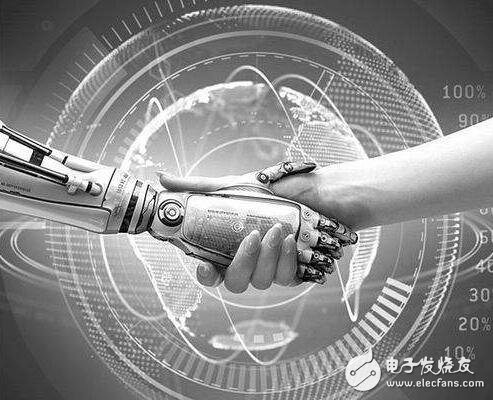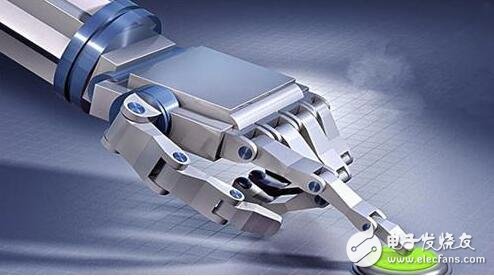Intelligent manufacturing is one of the latest manufacturing modes and has broad development prospects. Intelligent manufacturing is essentially an intelligent information processing system that externally controls the movement of robots and completes the manufacture and processing of products. The system is an open system with open materials, information and energy. Intelligent manufacturing is the development direction of manufacturing revitalization in the new century, and it is the only way for China to achieve manufacturing leapfrogging.
Latest intelligent manufacturing technology1. Cyber ​​physics system
CPS: Cyber-PhysicalSystems, a multi-dimensional complex system for integrated computing, network and physical environments, realizes real-time perception of large engineering systems through organic integration and deep collaboration of 3C (CompuTIng, CommunicaTIon, Control) technology. Dynamic control and information services enable physical devices to have five functions of computing, communication, precise control, remote coordination and autonomy, thus realizing the fusion of the virtual network world and the real physical world. CPS can connect resources, information, objects and people to create Internet of Things and related services, and transform production plants into a smart environment.
2, artificial intelligence
AI: Artificial Intelligence, which is the theory, method, technology, and application system for researching and developing intelligence for simulating, extending, and extending people. It attempts to understand the essence of intelligence and produce a new intelligent machine that responds in a manner similar to human intelligence. Research in this area includes robotics, speech recognition, image recognition, natural language processing, and expert systems.
3. Augmented reality technology
AR: Augmented Reality, a new technology that seamlessly integrates real-world information with virtual world information. It is an entity that is difficult to experience in a certain time and space of the real world. (Visual, sound, taste, touch and other information), through computer and other science and technology, simulation and then superimposed, the virtual information is applied to the real world, perceived by human senses, thus achieving a sensory experience beyond reality. The real environment and virtual objects are superimposed in real time on the same picture or space. Augmented reality technology not only displays the information of the real world, but also displays the virtual information at the same time, and the two kinds of information complement each other and superimpose. Augmented reality technology includes new technologies and new methods such as multimedia, 3D modeling, real-time video display and control, multi-sensor fusion, real-time tracking and registration, and scene fusion.
4. Model-based enterprises
MBE: Model-based enterprise, Model-BasedEnterprise, is a manufacturing entity that uses modeling and simulation technology to thoroughly improve and seamlessly integrate all technical and business processes of design, manufacturing, and product support. And strategic management; use product and process models to define, execute, control, and manage the entire process of the enterprise; and use scientific simulation and analysis tools to make the best decisions at every step of the product lifecycle (PLM). Reduce the time and cost of product innovation, development, manufacturing and support.
5. Internet of Things
IoT: Internet of Things, Internet of Things, Internet of Things, refers to the Internet through various information sensing devices, real-time collection of any information needed to monitor, connect, interact with objects or processes, and the Internet. A huge network formed by the combination. Its purpose is to realize the connection between objects and objects, objects and people, all items and networks, and to facilitate identification, management and control.

6, cloud computing
CC: Cloud computing, Cloud CompuTIng, is a pay-per-use model that provides available, convenient, on-demand network access to a configurable pool of computing resources (resources including networks, servers, Storage, application software, services), these resources can be quickly provided, with little administrative effort or little interaction with service providers.
7, industrial big data
IBD, industrial big data, Industrial Big Data, is the application of big data concept to the industrial field, in order to isolate equipment data, activity data, environmental data, service data, business data, market data and upstream and downstream industry chain data. Massive and diverse data are connected to each other to realize the connection between people, things and things, and between people and things, especially to realize the connection between end users and manufacturing and service processes, through new processing modes, according to business scenarios. The requirement of timeliness is to realize the mutual conversion of data, information and knowledge, so that it has stronger decision-making power, insight and process optimization ability.
Compared with big data in other fields, industrial big data has more characteristics of professionalism, relevance, process, timing and resolution.
(Note, because there is no mature definition of industrial big data, this definition is based on its own understanding, in the definition of big data by Gartner, IBM, etc. and the understanding of Professor Li Jie's "Industrial Big Data" to form this definition. I hope everyone will criticize and correct me)
8. Prediction and health management
PHM, the predictive and health management, Prognostics and Health Management, is a new solution to manage health status by combining the latest research results of modern information technology and artificial intelligence technology. In general, the PHM system consists of six components: data collection, information induction processing, condition monitoring, health assessment, fault prediction decision making, and assurance decision making.
9, mixed manufacturing
Combining 3D printing (additive manufacturing) technology with milling (subtractive manufacturing) technology to form a new manufacturing model. Through hybrid manufacturing, it is possible to realize the processing of new geometric shapes by virtue of the advantages of additive manufacturing, and at the same time, the additive manufacturing technology is no longer limited to the processing of small workpieces, and the processing efficiency is greatly improved.
10, factory information security
Factory information security is the application of information security concepts and industrial fields to achieve security protection for systems and terminals covered by the plant and product use and maintenance. The terminal equipment and systems involved include industrial Ethernet, data acquisition and monitoring (SCADA), distributed control system (DCS), process control system (PCS), programmable logic controller (PLC), remote monitoring system and other network equipment. And the operational safety of the industrial control system ensures that industrial Ethernet and industrial systems are not unauthorized access, use, disclosure, interruption, modification and destruction, providing information services for normal production and normal use of the enterprise.

(1) Connotation analysis of intelligent manufacturing system
The intelligent manufacturing system was first proposed by advanced industrialized countries in the 1980s, and it mainly consists of only manufacturing technology and intelligent manufacturing systems. In general, the intelligent manufacturing system refers to the idea of ​​application integration engineering. Through the advanced technology of manufacturing software expert system, robot vision and control, the robots in the intelligent assembly production line can finally complete the production without manual intervention. task. The purpose of intelligent manufacturing is to transform human brain activity into intelligent thinking of manufacturing robots. The physical basis of the intelligent manufacturing system is intelligent robots. The necessary equipment includes intelligent conveying machines, intelligent conveying platforms for tools and equipment, and assembly equipment.
(2) Research status of intelligent manufacturing system at home and abroad
After the introduction of intelligent manufacturing in the 1980s, three major research centers were formed in the international arena, namely the United States, Europe and Japan. The original connotation refers to the intelligent machine tool, which can complete all the functions performed by the skilled machine to operate the ordinary machine tool, and has certain intelligence. Later, the concept of intelligent manufacturing was developed and extended to form an open operating system. In 1990, Japan completed the world's first intelligent manufacturing plant, and robots incorporating artificial intelligence technology also provided visual tactile functions. . Relatively speaking, China's research in this field started late, and it was only after the 1990s that it applied for the establishment of the first national project for intelligent manufacturing. In the field of theoretical research, it focuses on the basic theoretical analysis of intelligent manufacturing, intelligent unit manufacturing and control, and the development of intelligent robots.
The application of intelligent manufacturing is emerging worldwide. It is the inevitable development of manufacturing technology, especially the development of information technology, and the result of the development of automation and integration technology. However, although intelligent manufacturing has received extensive attention and in-depth research in the academic world, it has been difficult to obtain widespread application and promotion in the industry. At the same time, the research on the new theory of intelligent manufacturing systems has encountered bottlenecks in recent years. The problem lies in intelligent manufacturing. The system architecture has not been thoroughly researched, and there is no better control over the development trend of intelligent manufacturing systems.
2. Research on intelligent manufacturing system architecture(1) Analysis of the overall architecture of the intelligent manufacturing system
The overall architecture of intelligent manufacturing consists of five levels: business layer, operation layer, functional system, functional unit and supporting technology. The intelligent production lines are complemented by different levels, and the system is closely related to the demand. The system takes the demand order as the input, integrates the information system as the core, integrates the automatic loading and unloading and other sub-function systems, and relies on the basic functional unit and supporting technology to promote the normal production line of the intelligent manufacturing. Operation, achieving high-volume product customization and personalized customer service goals to maximize customer and market needs. The content and composition of each level are as follows: (1) System business layer: the system goal is to provide customers with large-scale customized products and personalized customer service. (2) System operation layer: It mainly includes the latest technologies such as lean, digital and agile. (3) Functional system layer: equipment early warning, optimized processing parameters, monitoring the whole process of production, online implementation of precision detection, and finally integration through information technology systems. (4) Functional unit layer: This part undertakes information transmission of equipment and processing equipment, using sensor network and communication network technology. (5) Supporting technology layer: System design technology mainly includes sensing technology and modular technology, equipment fault diagnosis and maintenance system, safety maintenance and effective identification of equipment and signals.
(2) Problems in the intelligent manufacturing system
Intelligent manufacturing wants to fully propose manual intervention and realize machine autonomous control and analysis in a complete sense. It is necessary to establish an intelligent, digital, and informatized enterprise management network, through which the product design, assembly and manufacturing are completed. The whole process control of warehousing logistics, which also includes automatic handling and maintenance of problem products and faulty equipment. However, at this stage, China's manufacturing and assembly enterprises have no small problems in the interconnection and interoperability of various manufacturing factors, mainly reflected in the horizontal and vertical integrated communication and port-to-port signal transmission between the functional units of the intelligent manufacturing system. Basic content such as data formats, communication protocols, and language recognition has not yet been fully resolved. With the convergence of the latest technologies such as the Internet of Things, big data and cloud computing, communication between functional units is a problem that must be solved. The interaction between human-computer interaction, equipment and equipment, manufacturing and warehousing logistics is a major problem that plagues the construction and development of intelligent manufacturing systems.

3. Analysis of development trend of intelligent manufacturing system
(1) Analysis of the development direction of flexible manufacturing system
The flexible manufacturing direction of the intelligent manufacturing system is triggered by the flexible and intelligent assembly of petroleum. The basic basic idea is that the research level of flexible assembly is divided into flexible tooling, flexible process planning and flexible workshop scheduling from top to bottom. The main research ideas include structural optimization design, automatic generation of tooling drive data, assembly sequence planning and distribution method research, and intelligent scheduling technology. The development of flexibility is based on the new development directions that can only be assembled on various problems and products that may occur on the production line. Among them, variable parameters and flexible scheduling are the most important research areas.
(2) analysis of the lean development direction of intelligent manufacturing system
Lean research includes four aspects: (1 adaptive fast mold change technology in intelligent manufacturing environment; (2) equipment maintenance technology consisting of equipment self-diagnosis, adaptive and self-repair technology; (3) 3P technology that automates production processes, which can waste resources in the production process in the source links of design and process research; (4) Balanced mixed flow production technology, which is based on rational planning of production plans and on-site Intelligent manufacturing methods such as dynamic adjustment and deployment.
(3) The development direction of agile manufacturing system
Agile has two main research directions: First, the rapid response to customer order changes is a major feature of manufacturing. Through the investigation of customer needs in the early stage, based on big data analysis, algorithms such as neural networks are used. The customer's order may be predicted, and the corresponding curve is fitted, the response basic function is obtained, and then the key factors of design and production are optimized, and finally the time for customer demand response is greatly reduced. The second is the design and formulation of functional units. When using intelligent manufacturing lines, functional modules that are categorized into the various components involved in production, including software design, hardware requirements, and process design, are required. After the function is divided, the module units of each system are formed, and the corresponding algorithms are configured to achieve the purpose of improving the flexibility and reconfigurability of the intelligent manufacturing system.
Wire harness & Cable assembly:The terminal wire in the electronic machine can effectively solve the problem of control and wire diameter of equipment installation. In addition, the installation operation is more convenient and safe. It is mainly reflected in that the secondary wiring is not easy to start, and other secondary wires may be touched during connection; if the primary connection wire diameter is small, the wire diameter is too large. For the cabinet with high segmentation degree, the bending radius is a problem, and the stress problem will occur, The switch may be damaged; in addition, the wire nose required by the installation specification may be greatly larger than the installation point of the component itself, and these terminal machines can effectively solve the problem.
Wire harness & Cable assembly
ShenZhen Antenk Electronics Co,Ltd , https://www.antenkconn.com
